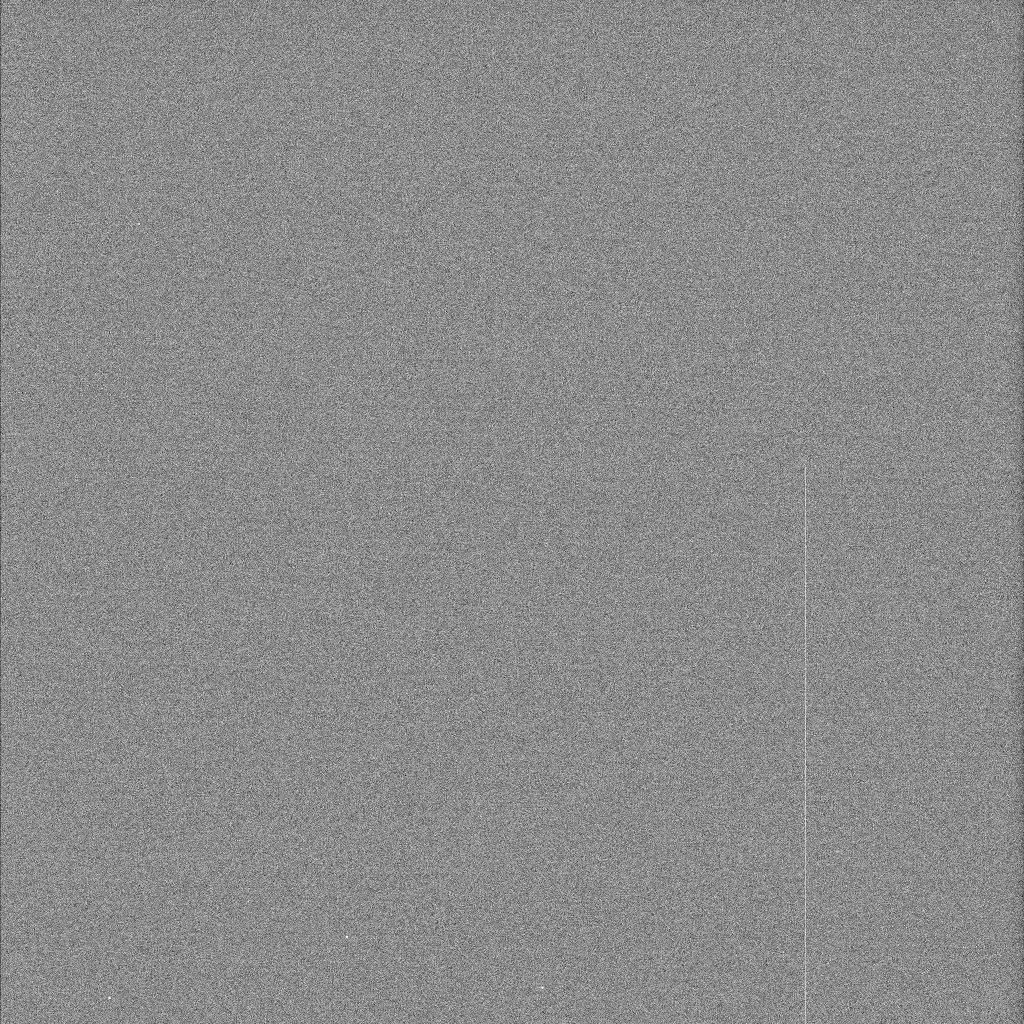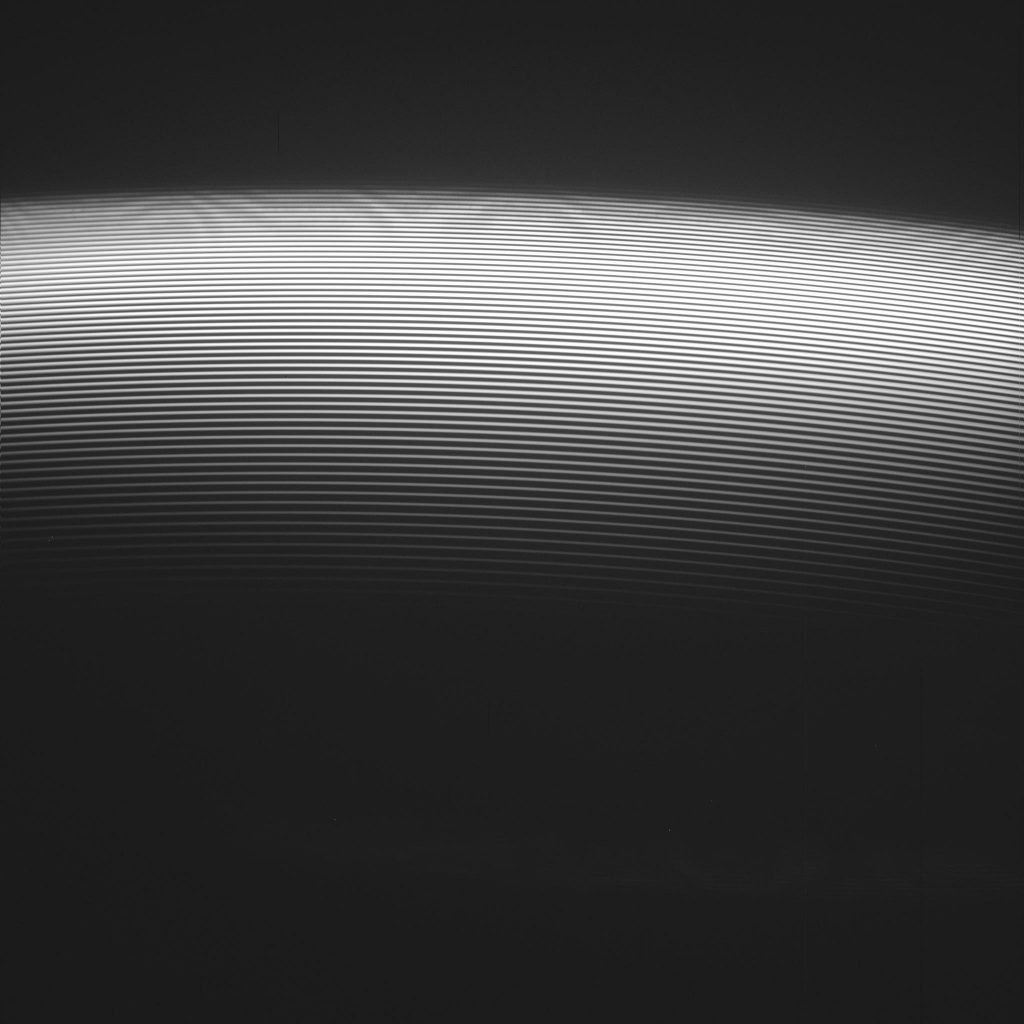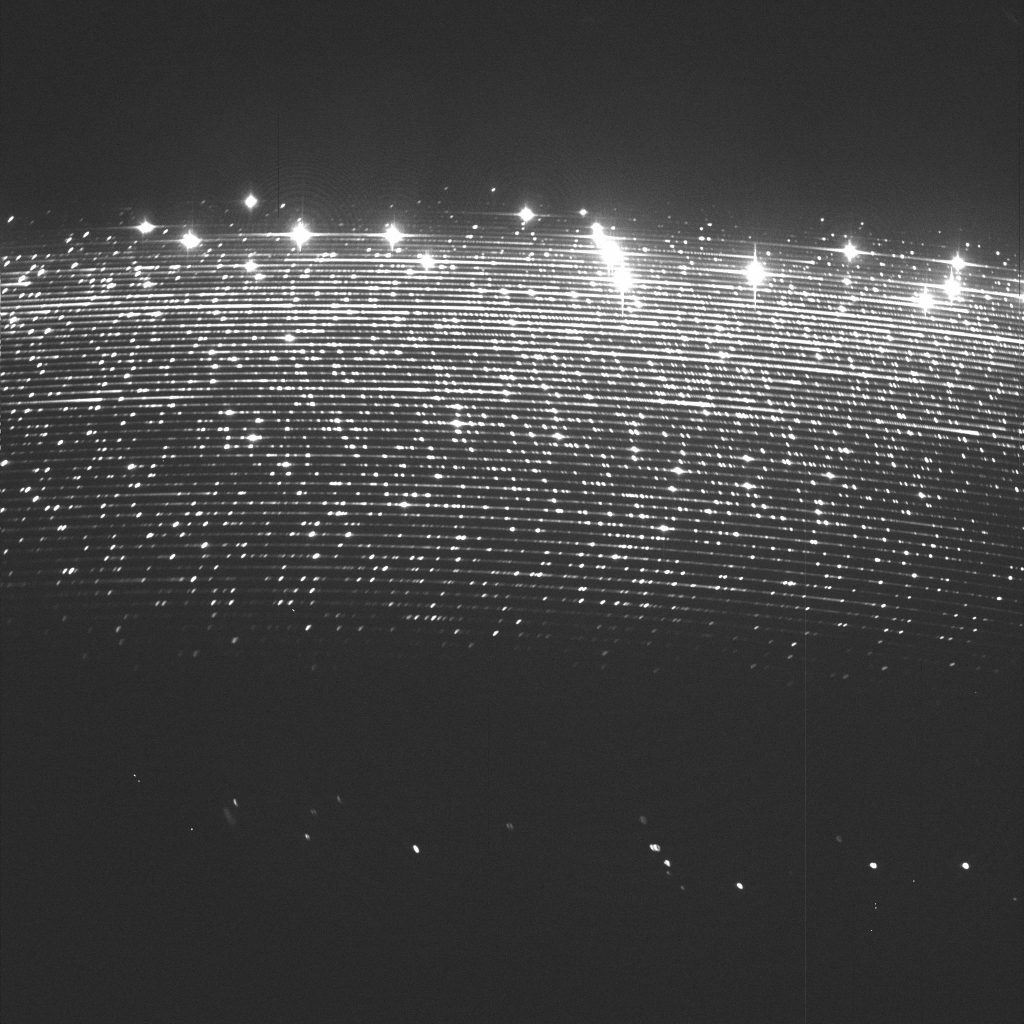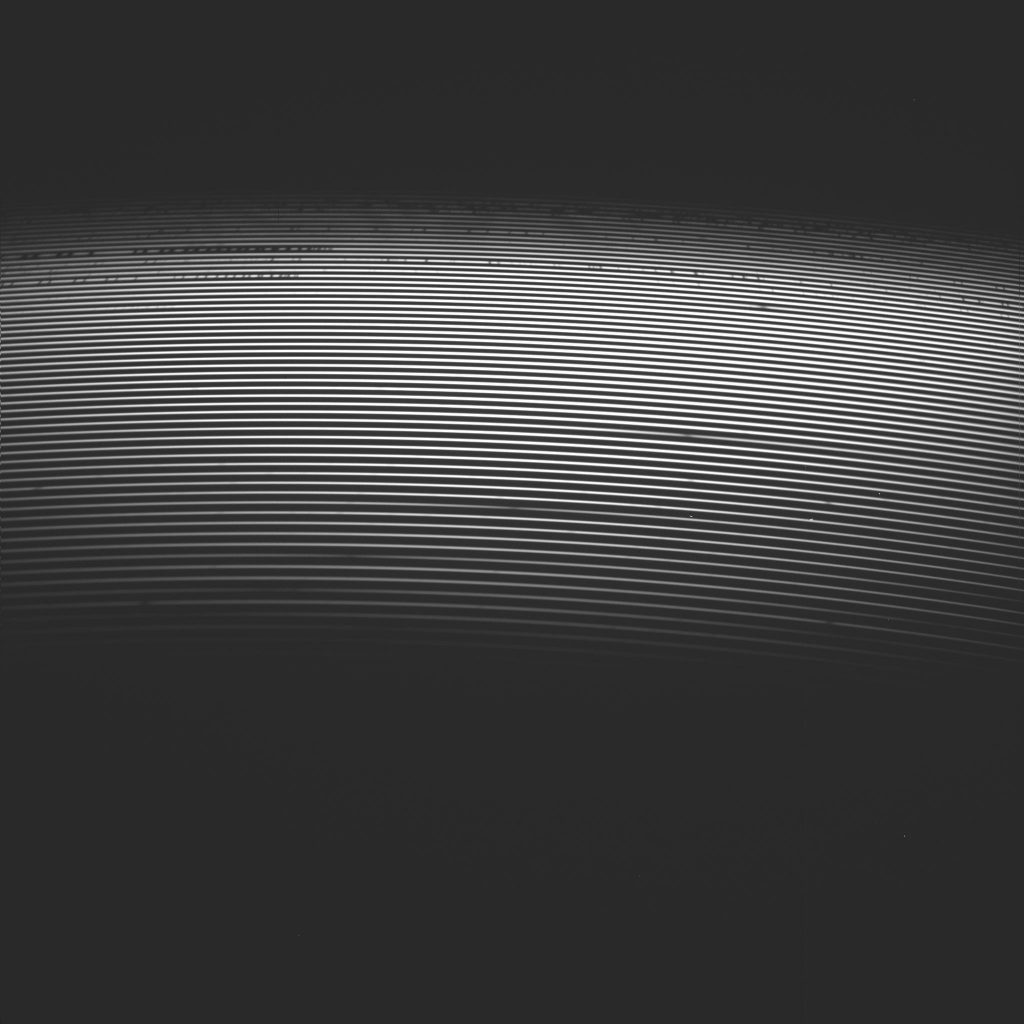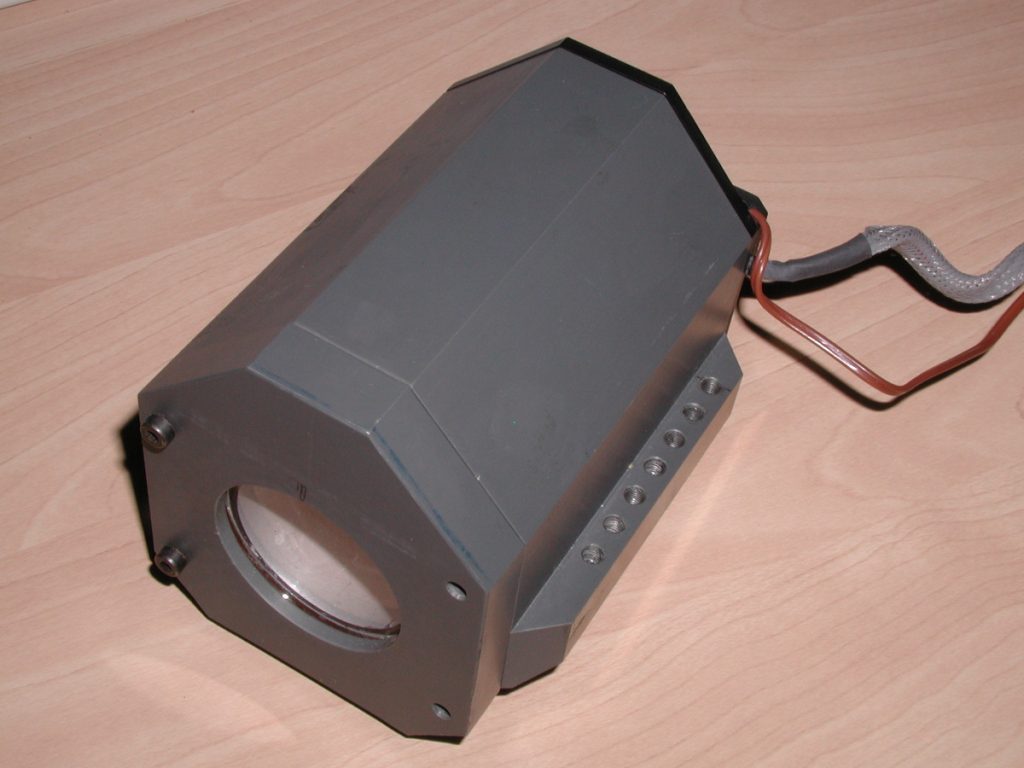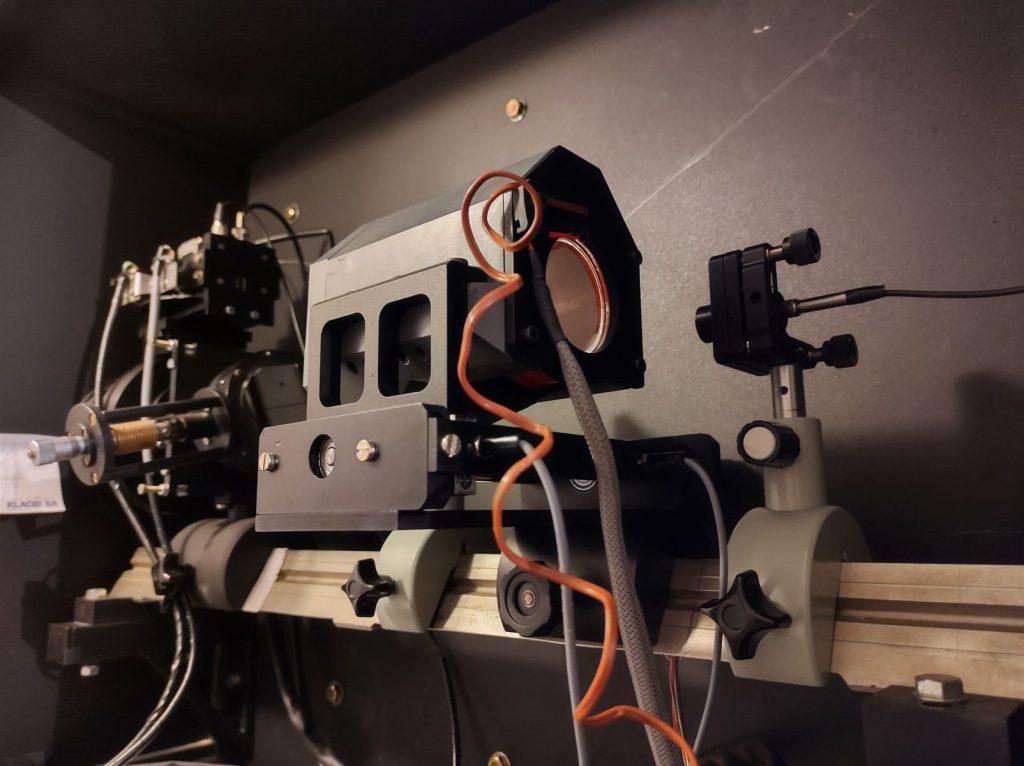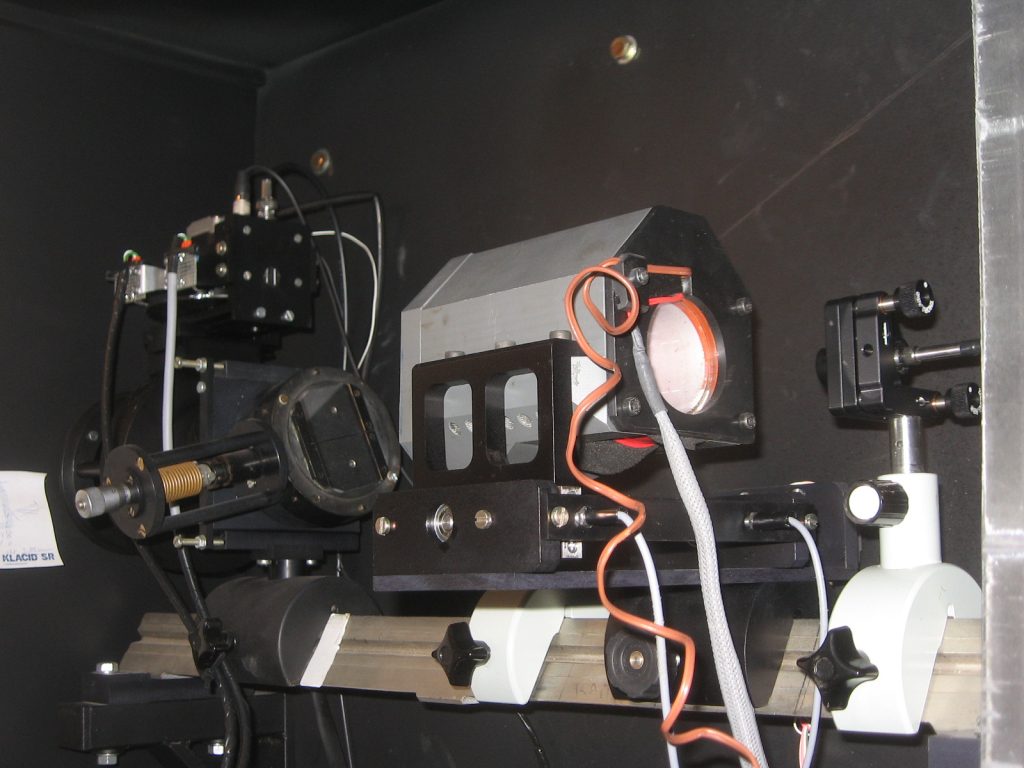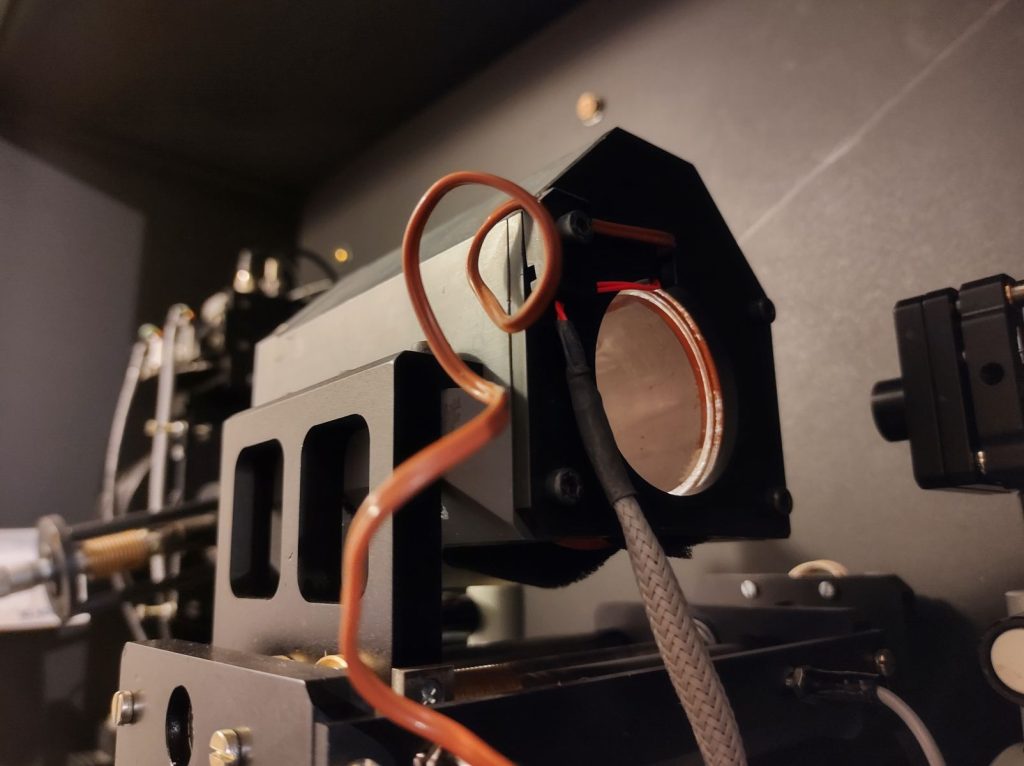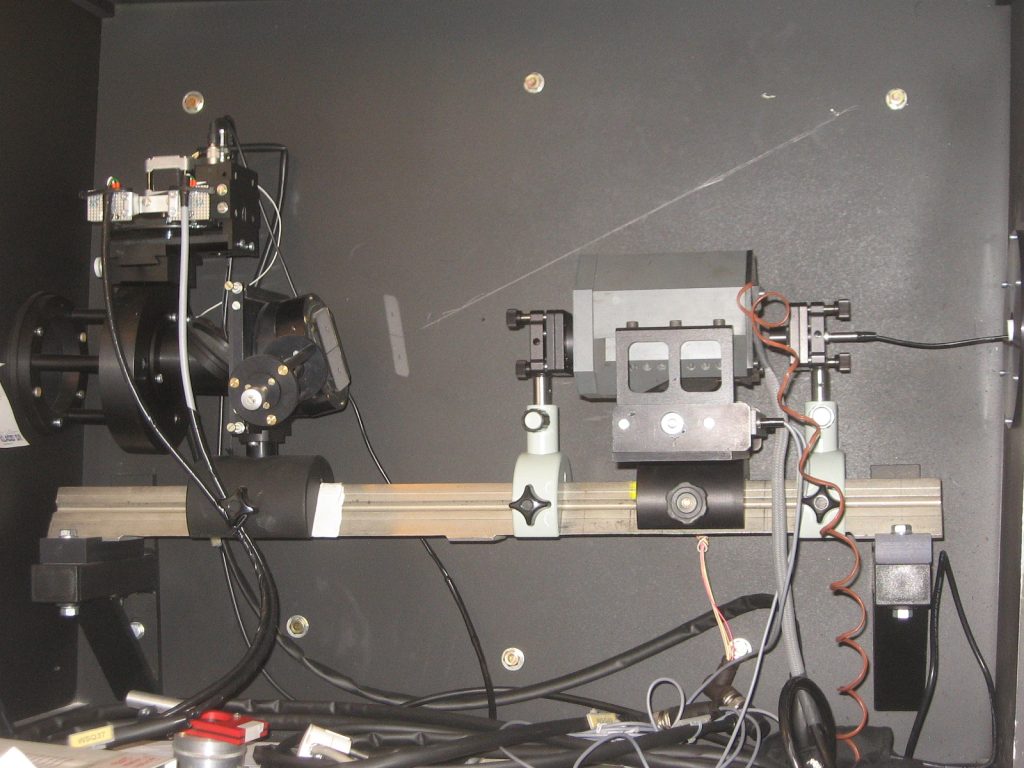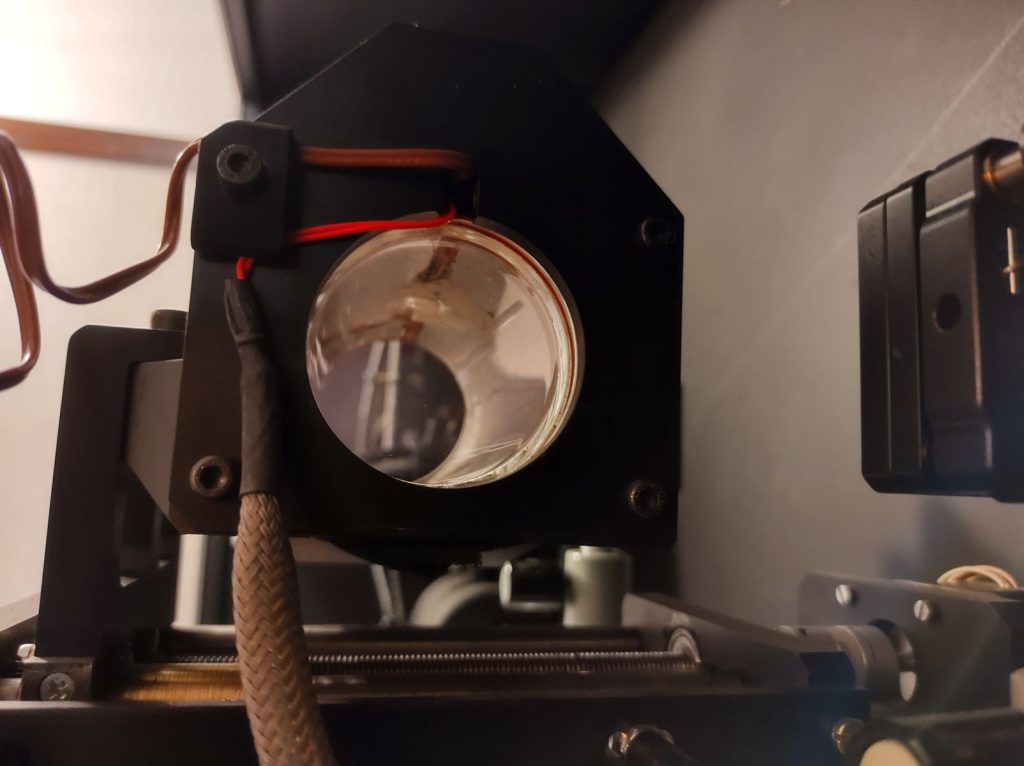Ondřejov Echelle Spectrograph (OES) is a fibre-fed high-resolution spectrograph. The light reflected from the main mirror is from primary focus directed via optical fiber to the coudé room where it is reflected to a Zerodur echelle grating (by Richardson Grating Laboratories). The optical mirror reflects the light further to a equilateral prism (made by TOPTEC Turnov, CZ), which separates the orders that are then brought to a focus on the detector, which is a nitrogen-cooled CCD Camera Versarray 2048B (Roper Scientific, for more details see here) with working temperature of the detector -110°C.
The spectrograph can be fed independently through the same fiber by Thorium Argon calibration lamp and flat field calibration lamp. Also, the iodine cell is mounted on the telescope-spectrograph interface, providing a secondary (optional) spectral calibration source.
A more detailed technical description with mechanical setup and all optical elements can be found in the report from the installation phase of the OES by Koubský at al., Ondřejov Echelle Spectrograph – OES, Publ. Astron. Inst. ASCR, 92:37–43, 2004. For more details about OES see also Kabáth et al., 2020, PASP, 132, 5002.


Left: OES spectrograph optical layout and light path from the slit to the detector. A – slit, B – collimator, C – echelle grating, D – first parabolic mirror, E – small flat mirror, F – second parabolic mirror (optical elements D, E and F are parts of so called white pupil, making the light beam more narrow), G- prism, H – objective lens and dewar vessel. Right: Upper image – the mechanical parts holding the optical elements of the Ondrejov Echelle Spectrograph. Lower image – the detector with the dewar vessel. Credit: Miroslav Šlechta.
Echelle Grating
- Manufacturer: Richardson Grating Laboratories.
| Dimensions | Echelle | Blaze angle | Material |
| 157 x 412 mm | 54.5 g/mm | 69° | Zerodur |
Prism
- Manufacturer: Walter, Faculty of Mathematics and Physics, Charles University in Prague.
| Dimensions | Height | Diffraction angle | Material | Density |
| 144 x 118 mm | 140 mm | 54.5° | Schott LF5 | 3.25 g/mm3 |
CCD Camera
- Manufacturer: Versarray 2048B
| Chip | Resolution | Pixel size | Dynamical range | Technical |
| EEV 42-40-1-368 | 2k x 2k | 13.5 μm | 16 bit | Details |
Wavelength coverage and performance
The wavelength coverage of OES is from near UV (3753 Å) up to near IR (9195 Å). The resolving power is R=51600 at 5000 Å (R∼40000 in Hα) and spectral sampling is 2.4 Å/mm. The spectral range is covered by 56 usable orders. The number of spectral orders range from 92 to 36. The individual spectral order covers ∼70 Å in the near UV region and ∼145 Å in near IR regions. In blue, spectral orders overlap, thus, it is possible to merge them. The overlapping interval is ∼20 Å in near UV. However, the overlapping intervals gets shorter towards red and the last (short) overlapping intervals are between spectral orders covering 5782-5879 and 5879-5977 (the overlap is less than 1 Å). Between the orders covering 5879-5977 and 5978-6079, there is already a gap (∼1 Å). The gap is gradually increasing and around H the gap between consecutive orders is ∼13 Å and even ∼63 Å around 8800 Å.
Information about spectra calibration is available here.
Sample images
SNR vs. Exposure time
The appropriate exposure time can be roughly estimated using Fig. 3. It is seen that for the signal-to-noise ratio (SNR) of ~65, an 1-hour exposure time is needed for a 10-mag star. However, the particular SNR depends not only on the zenith distance but mainly on the observing conditions. The limiting precision regarding the radial velocities is in the order of hundreds m/s for faint stars. By using the iodine cell, precision is about a few tens of m/s.

Iodine cell
Ondřejov Echelle Spectrograph (OES) on the 2-m Perek telescope is equipped with an iodine cell for the calibration of observed spectra. Thanks to the iodine cell a displacement of the spectral lines on the detector can be measured with an accuracy of 0.00005 mm, and it is possible to detect smaller exoplanets orbiting distant stars than what could be detected using the calibration based on Thorium-Argon lines.
The iodine cell was manufactured and later lent in the long term to the stellar department of the Astronomical institute in Ondřejov for OES by prof. Artie Hatzes from the Tautenburg observatory in Germany. He is interested in extrasolar planets, and to find them one of the detection methods uses accurate measurements of spectral line shifts. And the iodine cell serves this purpose. It is a cell filled with iodine which is placed in front of the spectrograph slit in the light coming from a star and the telescope. During observations the iodine cell is heated up to 50˚C when iodine is in a gas state. Because the stellar light passes through the iodine cell there will be iodine absorption lines in the observed stellar spectra from about 500-610 nm. The observed shift of a stellar spectrum consists of the actual Doppler shift and a small spurious shifts due to instrumental effects. These spurious shifts appear in iodine lines as well, and can then be applied as a correction to the observed shift of a stellar spectrum. The spurious shifts can be caused by several reasons, for example movements of the photocentre of the telescope pupil at the spectrograph slit, mechanical instabilities of the spectrograph or thermal variations. When we correct for these spurious shifts due to instrumental effects we can get more accurate and stable measurements of spectral line shifts over many years, and that is generally a necessary condition to discover exoplanets on long-period orbits.
Currently the iodine cell is used by researchers of the exoplanet group at the stellar department in Ondřejov. They use it for example to search for exoplanets orbiting red giant stars. They work with prof. Hatzes and his colleagues to optimize the usage of the iodine cell method for OES.

